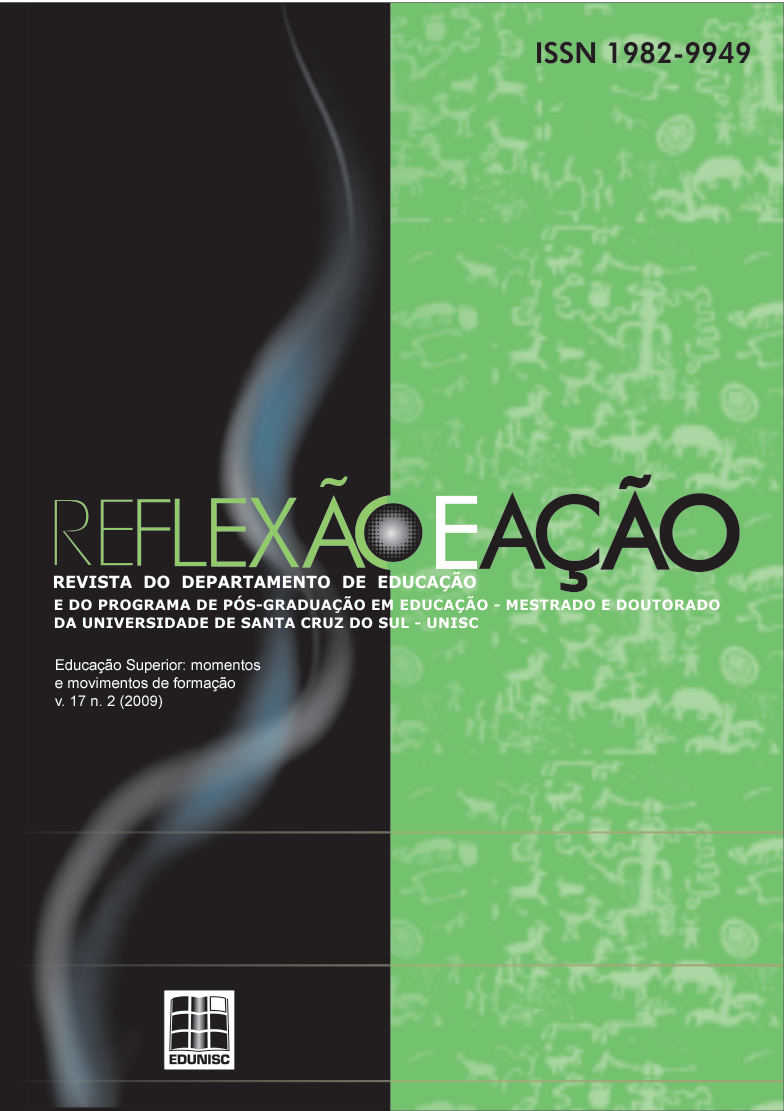ENSINO SUPERIOR, TUTORIA ONLINE E PROFISSÃO DOCENTE
DOI:
https://doi.org/10.17058/rea.v17i2.1033Palabras clave:
Ensino Superior, Educação a Distância, Tutoria Virtual, Prática Docente, Profissão Docente.Resumen
Este artigo traz a análise de uma pesquisa—de natureza descritivo-analítica—sobre a tutoria online, algumas de suas características e peculiaridades com relação à docência presencial. Para este fim, parte de um questionário respondido por 222 tutores virtuais pertencentes aos cursos oferecidos pela Universidade Federal de São Carlos (UFSCar) em parceria com a Universidade Aberta do Brasil (UAB) e municípios brasileiros. A análise enfocou algumas características dos tutores (e.g., gênero, formação e experiência docente), sua organização do trabalho e atividades exercidas, a divisão de trabalho (entre tutores e professores responsáveis pelas disciplinas), o entendimento dos respondentes sobre a natureza da tutoria e suas percepções sobre a educação a distância (EaD). O estudo fundamentou-se em autores tais como Lortie, Tardif e Shulman sobre a docência na modalidade presencial e em Mill, Maggio e Kenski, entre outros, sobre a docência a distância. Os resultados apontam para a predominância de tutores do sexo feminino, assemelhando-se à composição do corpo docente na modalidade presencial nos níveis inferiores, e indicam altos níveis de escolaridade e uma experiência bastante significativa na docência presencial. A despeito das dificuldades encontradas, devidas particularmente à falta de experiência nesta modalidade educacional e a questões técnicas, a maioria dos tutores declarou facilidade na atuação e satisfação com o trabalho realizado. Os dados também sugerem que os tutores gozaram de relativa autonomia com relação tanto às ações associadas à transmissão do conteúdo quanto àquelas relativas à gestão da sala de aula no ambiente virtual de aprendizagem. Esta autonomia pode estar na base da percepção dos respondentes de que o tutor online, no contexto estudado, exerceria uma função verdadeiramente docente.Descargas
##submission.downloads##
Publicado
Cómo citar
Número
Sección
Licencia
El envío de originales a este periódico implica la transferencia, por parte de los(las) autores/as, de los derechos de publicación impresa y digital. Los derechos de autor para los artículos publicados son del(la) autor/a, con derechos del periódico sobre la primera publicación. Los(las) autores/as solo podrán utilizar los mismos resultados en otras publicaciones indicando claramente este periódico como medio de publicación original. En virtud de ser un periódico de acceso abierto, se permite el uso gratuito de los artículos en aplicaciones educacionales y científicas siempre y cuando se cite la fuente conforme la licencia CC-BY de Creative Commons.
 Creative Commons Atribuição 4.0 Internacional.
Creative Commons Atribuição 4.0 Internacional.


